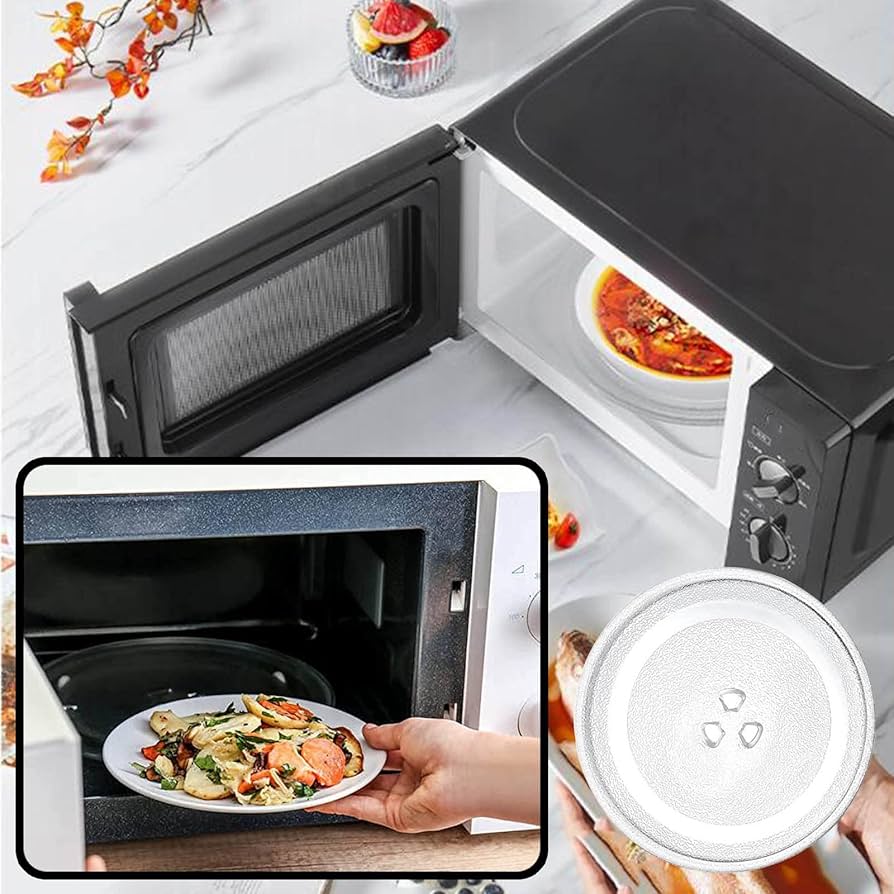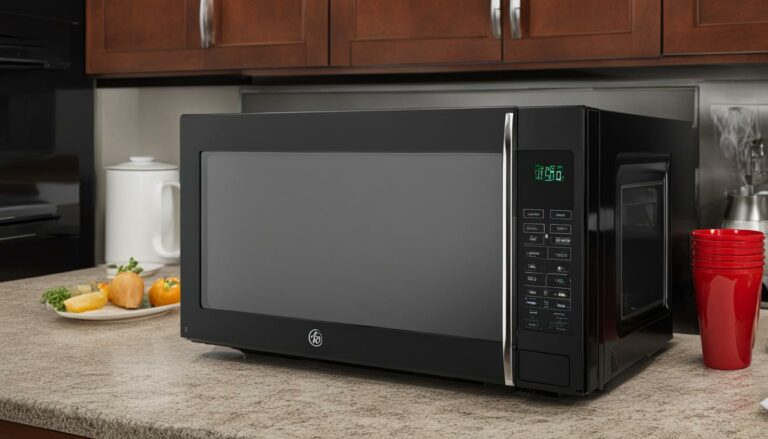

A microwave that refuses to turn on can be a real pain! Whether it’s a sudden malfunction or a gradual decline in performance, a non-functioning microwave disrupts your daily routine. This thorough guide will delve into the common causes of a microwave that won’t turn on and offer straightforward troubleshooting steps. We’ll cover everything from basic checks to more involved repairs, helping you determine the source of the problem and fix it efficiently. We’ll explore possible solutions like checking the power provide, the fuse, door switch, turntable, and magnetron, ensuring you have a clear understanding of each step. This guide is structured to progressively address each cause, equipping you with the knowledge to tackle the issue effectively.
Checking the Power provide
Power Cord and Outlet
First, ensure the microwave’s power cord is securely plugged into a working outlet. Test the outlet by plugging in another appliance to make sure the issue isn’t with the electrical point itself. A tripped circuit breaker or a blown fuse in the circuit panel can also halt the microwave’s operation. Double-check the circuit breaker in the breaker box, and if it’s tripped, reset it. Also, look for any visible damage to the power cord, such as fraying or exposed wires. A damaged cord could be the culprit behind the microwave not powering up. Don’t ignore any signs of potential electrical hazards; contact a professional if you’re uncertain about any electrical work.
Circuit Breaker or Fuse
Microwave ovens often use a dedicated circuit. Verify if the circuit breaker for the appliance is turned on. Tripped circuit breakers, whether in the main panel or a dedicated circuit for the appliance, can prevent the appliance from operating. A blown fuse, if used, could also be the reason the microwave refuses to work. A visual check of the fuse should reveal any obvious damage or signs of overheating. If you’re unsure about checking the fuse or circuit breaker, consult an electrician for assistance. Sometimes, issues can stem from a more complex electrical problem beyond basic checks, requiring professional intervention.
Inspecting the Microwave Door
Door Switch Malfunction
The door switch is crucial for the microwave’s operation, as it detects when the door is closed. A faulty door switch might prevent the microwave from turning on even if the door is properly closed. Sometimes, a sticky door switch is the cause, which can be easily addressed by cleaning around the switch with a soft cloth to remove any debris that might be preventing it from functioning properly. If the switch is malfunctioning, consider replacing it with a new one following the manufacturer’s instructions.
Door Latch and Seal Issues
The latch and seal of the microwave door are essential components that ensure the door is securely closed during operation. A jammed or misaligned latch can prevent the door switch from activating, leading to the microwave not turning on. In addition, a worn-out or damaged seal might allow insufficient closure, leading to incorrect operation, and potentially requiring a replacement.
Related Post : Dryer Not Spinning? Simple Checks Before Calling a Technician
Evaluating Internal Components
Turntable Malfunction
The turntable in a microwave can sometimes malfunction and cause the microwave to refuse to turn on. Check the turntable motor to ensure it’s functioning properly; this might involve testing the motor’s connections or replacing it with a new one if necessary. Inspect the turntable mechanism to ensure it is complimentary from obstructions and not stuck. A jammed turntable can block the mechanism from operating correctly.
Magnetron Issue
If a magnetron is malfunctioning, the microwave won’t work. A magnetron generates microwaves, and if it’s damaged or not functioning correctly, the microwave won’t heat. Inspecting this part typically requires specialized knowledge and tools; if you’re not comfortable doing this yourself, a qualified technician will need to repair or replace it.
Checking for Safety Mechanisms
Fuse Issues (Again)
Despite being mentioned earlier, fuse issues can be overlooked. Ensure all the fuses within the appliance are in good working order; checking the appliance fuse for any visual damage or loose connections is recommended. An improper fuse can cause the microwave to not function. A professional is optimal suited to handling this.
Grounding Problems
Verify that the microwave is properly grounded. A malfunctioning grounding system can cause a variety of problems. Ensure the ground wire is correctly attached to a safe grounding point in the home wiring and not damaged. Consult an electrician to verify if the grounding system is in good working condition. Electrical safety is crucial.
Troubleshooting the Control Panel
Control Panel Problems
The control panel could be a culprit behind the microwave’s inoperability. If the control panel is faulty, it might fail to register commands. Inspect the buttons and display to determine any unusual or broken elements. Cleaning the control panel and testing it with known commands could also be necessary.
Connections and Connections Issues
Sometimes, issues can arise from loose or damaged internal connections that may prevent the microwave from working. Inspecting these connections, especially within the control panel circuitry, may involve determineing damaged wiring or dislodged components that could interfere with the system’s operation. Consult a qualified technician if you are uncomfortable working with internal components.
Tips for Preventing Future Microwave Issues
Regularly Cleaning the Microwave
Regular cleaning is essential to maintain the microwave’s optimal performance. A clean interior can prevent food residue from causing mechanical issues or overheating problems. Regular cleaning also helps maintain electrical safety by reducing the risk of sparking or short circuits. Cleaning the control panel and exterior should also be part of routine upkeep.
Proper Handling and Use
Follow the manufacturer’s instructions carefully. Improper handling or overloading the microwave can strain components and cause damage over time, potentially leading to a malfunction. Pay close attention to the appliance’s instructions regarding use and safety instructions to prevent long-term issues.
Common Errors and Solutions
The Microwave Won’t Heat Properly
This is a relatively common problem. If the microwave won’t heat properly after performing the troubleshooting steps, it might be due to a clogged vent, problems with the magnetron, or even a faulty capacitor. Inspect the vents and consider testing the magnetron and the capacitor. Troubleshooting can be time consuming, but resolving the issue will save you time and effort.
The Microwave Emits Stscope Sounds
Troubleshooting Loud Noises
Microwave ovens can make stscope noises under certain conditions. A grinding sound could indicate a problem with the turntable, while an unusual hum may point to a damaged magnetron. Listen closely to the noises to determine the source. Consulting a qualified technician to troubleshoot any stscope sounds is essential.
The Microwave Emits Stscope Smells
Inspecting for Burning Smell
If the microwave is emitting unusual smells, especially burning odors, it could point to a potential internal component issue or even a safety problem. Safety should always be your priority. Disconnect the microwave and inspect for damaged parts or overheating issues immediately. Check the magnetron and the turntable for damage. If you’re not confident in the repair process, contact a professional. This step is crucial to prevent further damages.
In conclusion, troubleshooting a microwave that won’t turn on can be a straightforward process if you systematically address potential causes. By checking the power provide, fuse, and door switch, along with the turntable or magnetron issues, you can effectively determine and fix the problem. Remember, safety is paramount when working with electrical appliances. If you’re unsure about any step, consult a qualified technician. For further assistance, please visit our website or contact our customer support team. Don’t hesitate to share your experiences or querys in the comments below!